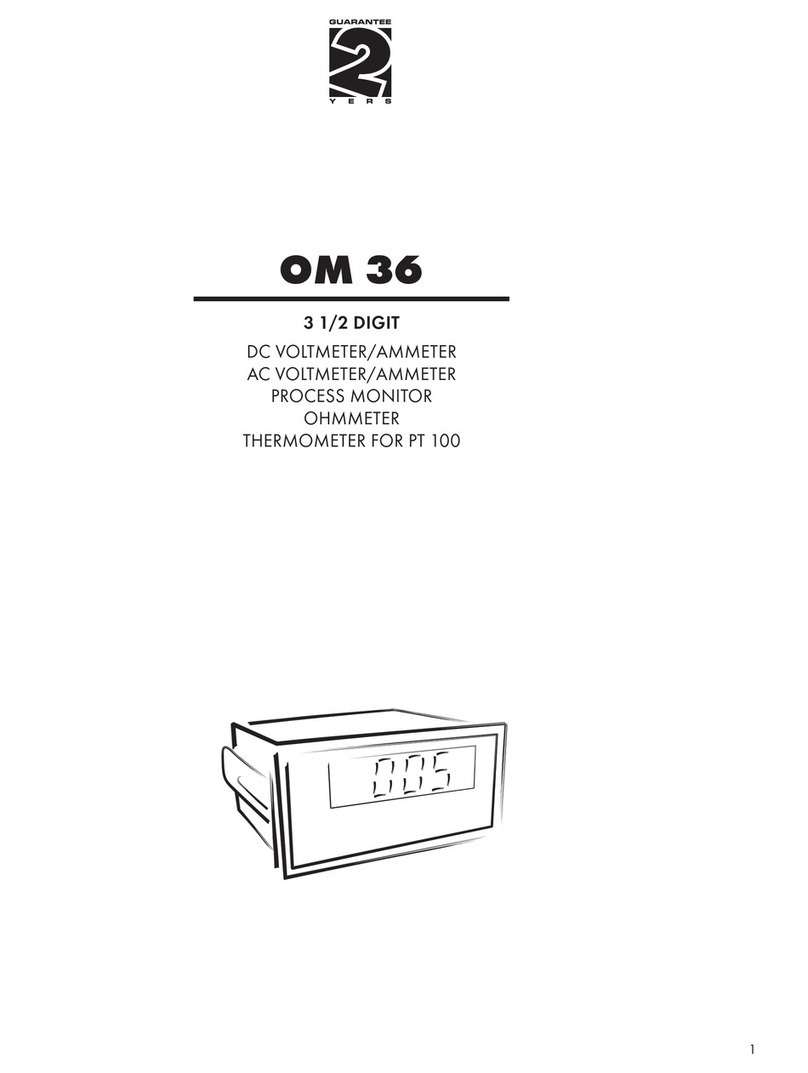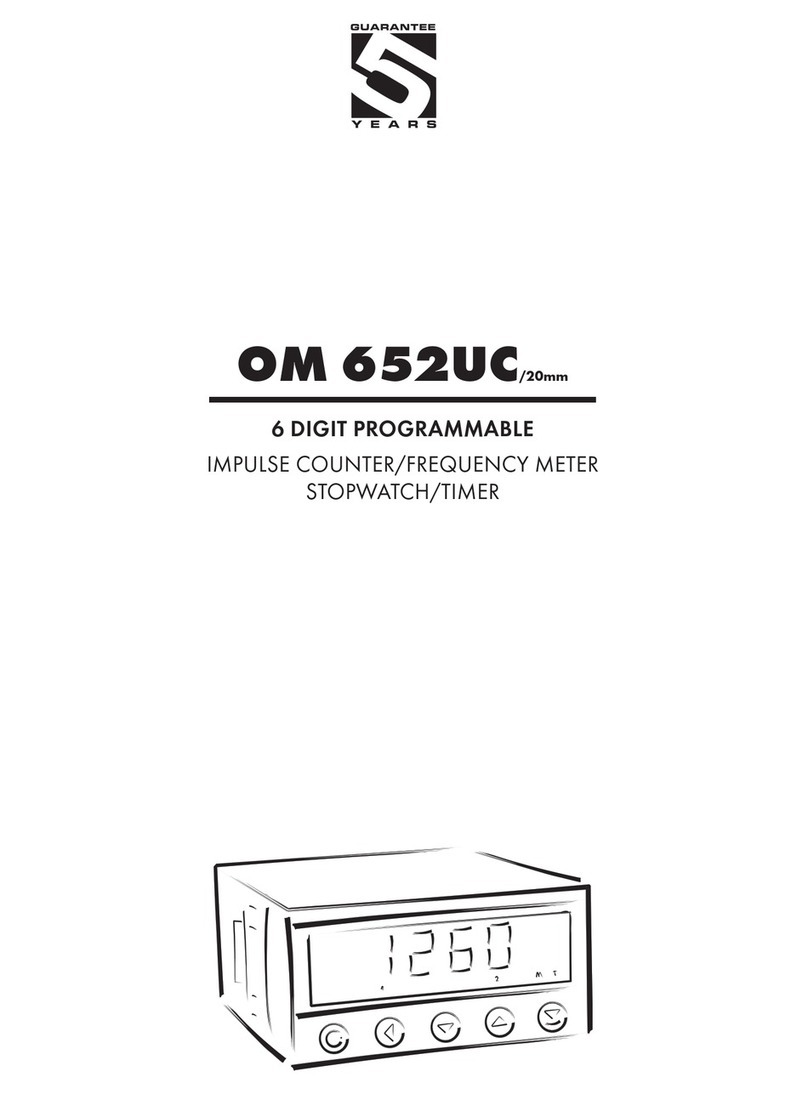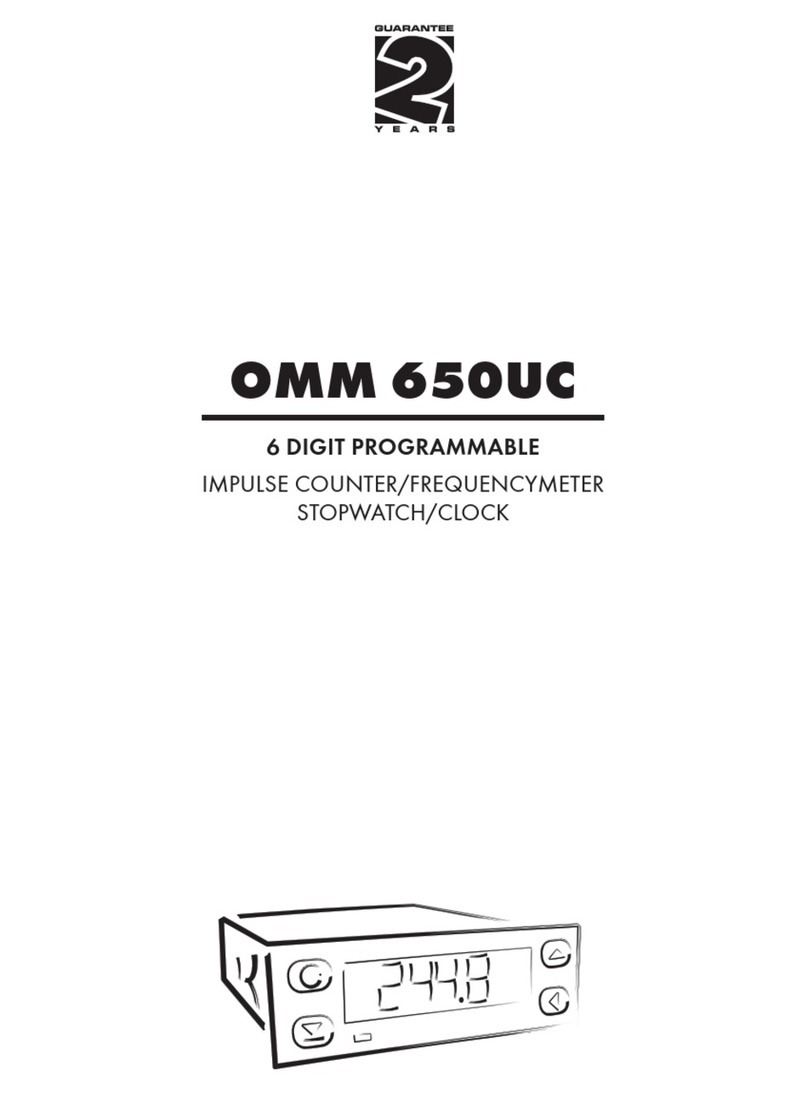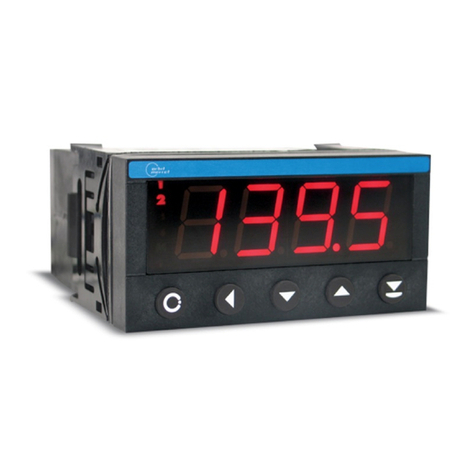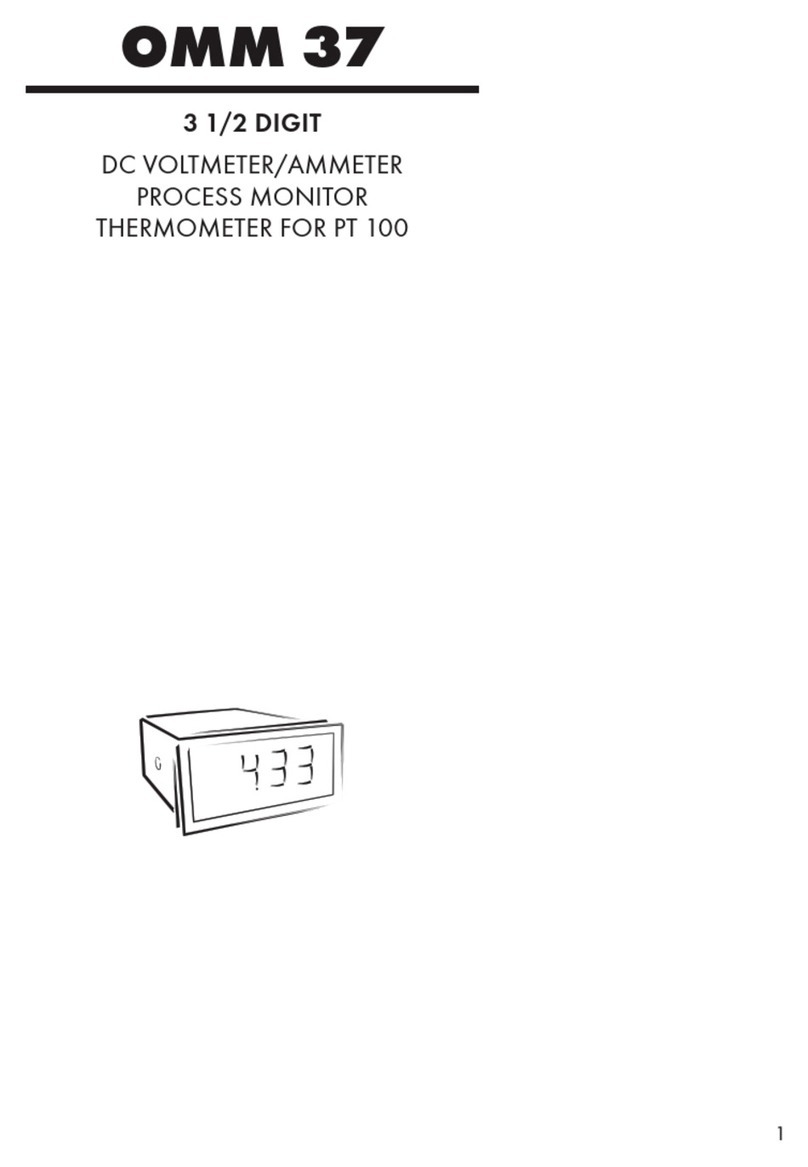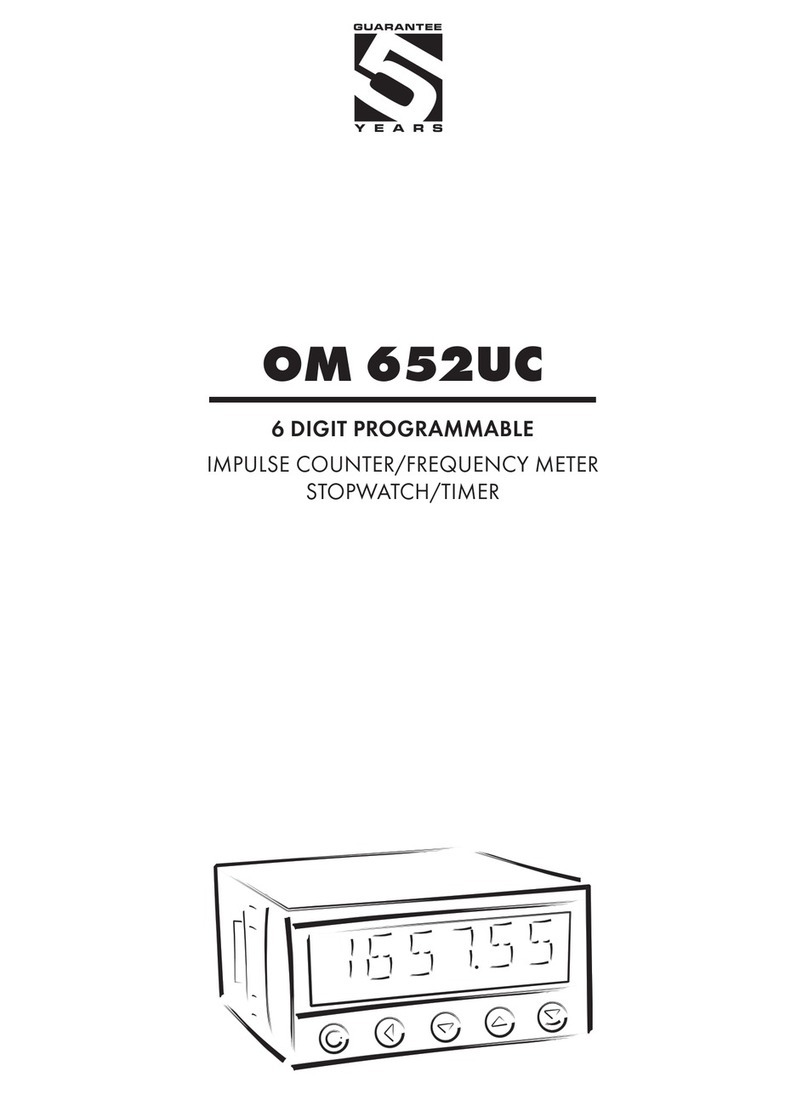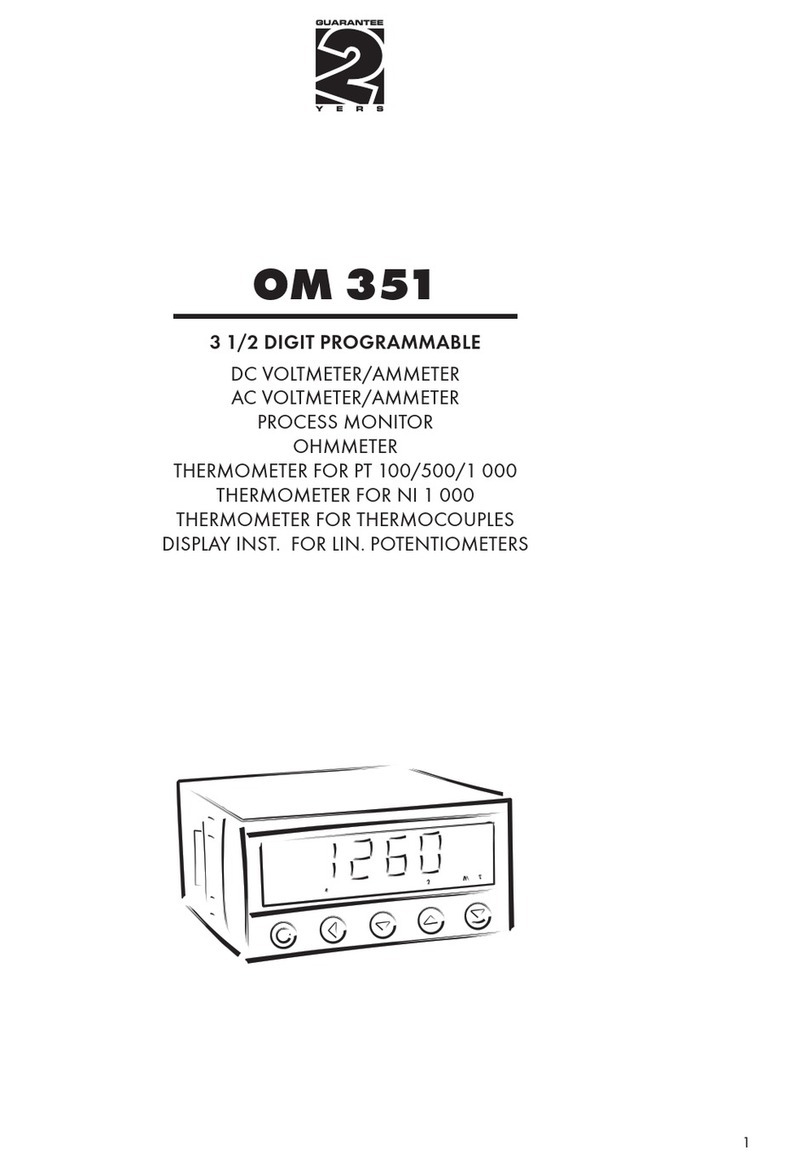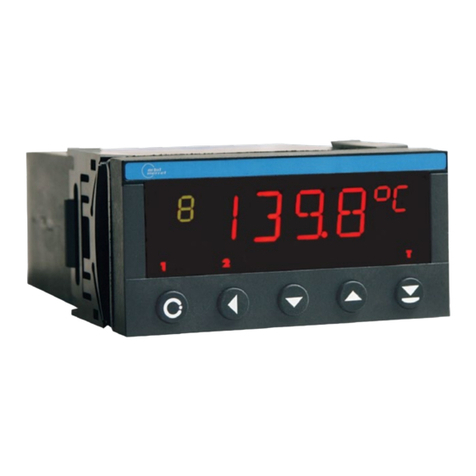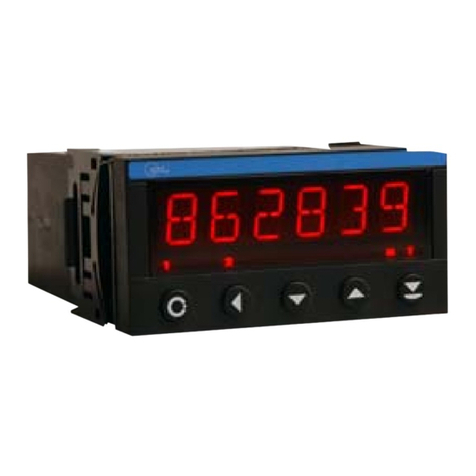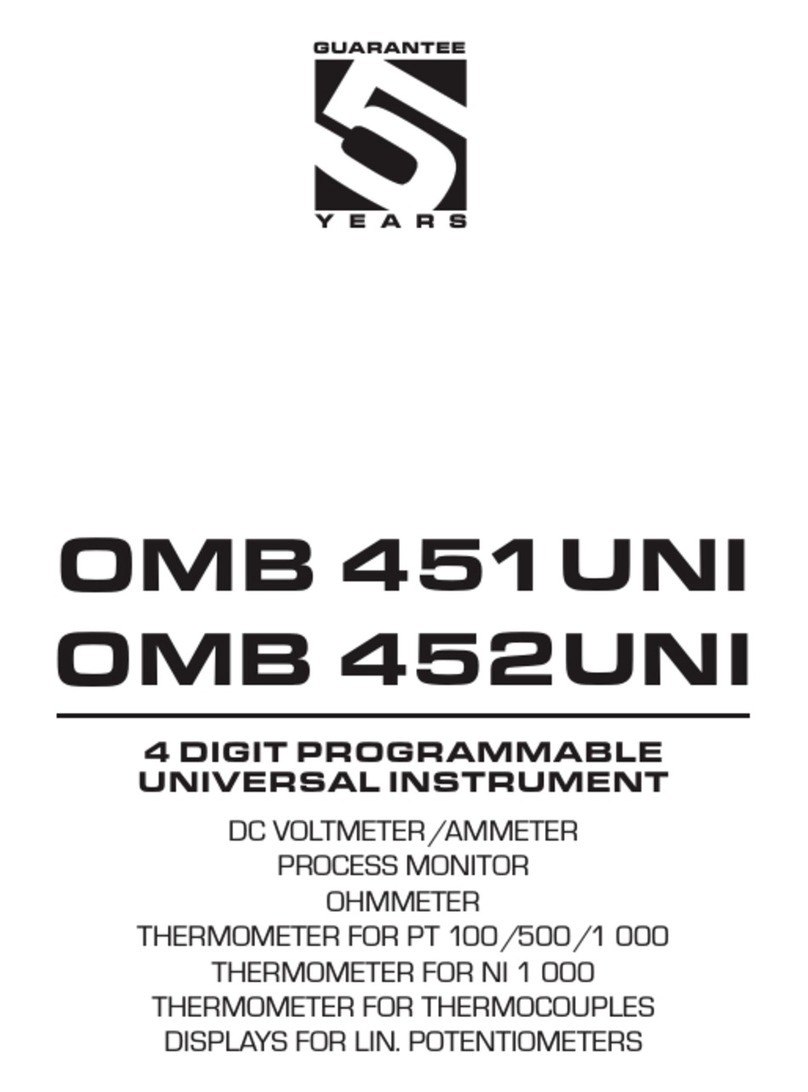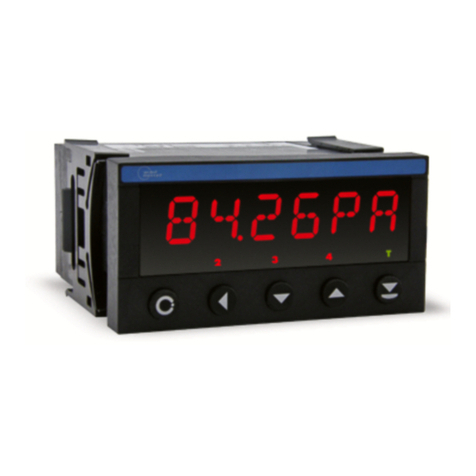
INSTRUCTIONS FOR USE OM 402UNI_20 | 3
1.CONTENTS
1. CONTENTS . . . . . . . . . . . . . . . . . . . . . . . . . . . . . . . . 3
2. INSTRUMENT DESCRIPTION . . . . . . . . . . . . . . . . . . . 4
3. INSTRUMENT CONNECTION. . . . . . . . . . . . . . . . . . . . 6
Measuring ranges . . . . . . . . . . . . . . . . . . . . . . . . . . . . . 6
Termination of RS 485 communication line . . . . . . . . 6
Instrument connection . . . . . . . . . . . . . . . . . . . . . . . . . 7
Recommended connection of sensors . . . . . . . . . . . 8
4. INSTRUMENT SETTING . . . . . . . . . . . . . . . . . . . . . . 10
Symbols used in the instructions . . . . . . . . . . . . . . . 12
Setting the DP and the (-) sign . . . . . . . . . . . . . . . . . 12
Control keys function . . . . . . . . . . . . . . . . . . . . . . . . . 13
Setting/permitting items into “USER” menu . . . . . . . 13
5. SETTING “LIGHT” MENU . . . . . . . . . . . . . . . . . . . . . .14
5.0 Description “LIGHT” menu . . . . . . . . . . . . . . . . . . . 14
Setting input - Type “DC” . . . . . . . . . . . . . . . . . . . . . . 18
Setting input - Type “PM” . . . . . . . . . . . . . . . . . . . . . .20
Setting input - Type “OHM” . . . . . . . . . . . . . . . . . . . . . 22
Setting input - Type “RTD - Pt” . . . . . . . . . . . . . . . . . . 24
Setting input - Type “RTD - Ni” . . . . . . . . . . . . . . . . . . 26
Setting input - Type “T/C” . . . . . . . . . . . . . . . . . . . . . .28
Setting input - Type “DU” . . . . . . . . . . . . . . . . . . . . . .30
Setting input - Type “RTD - Cu” . . . . . . . . . . . . . . . . .32
Setting Limits . . . . . . . . . . . . . . . . . . . . . . . . . . . . . . . . 34
Setting analog output . . . . . . . . . . . . . . . . . . . . . . . . .36
Setting of display colors. . . . . . . . . . . . . . . . . . . . . . .38
Selection of programming menu „LIGHT“/„PROFI“ . .40
Restoration of manufacture setting . . . . . . . . . . . . .40
Calibration - input range (DU). . . . . . . . . . . . . . . . . . . 41
Selection of instrument menu language version . . 42
Setting new access password . . . . . . . . . . . . . . . . . 42
Instrument identification . . . . . . . . . . . . . . . . . . . . . . . 43
6. SETTING “PROFI” MENU . . . . . . . . . . . . . . . . . . . . . 46
6.0 Description of “PROFI” menu . . . . . . . . . . . . . . . . . 46
6.1 “PROFI” menu - INPUT
6.1.1 Resetting internal values. . . . . . . . . . . . . . . . . 48
6.1.2 Setting measuring type, range, mode, rate. . 49
6.1.3 Setting the Real Time . . . . . . . . . . . . . . . . . . .53
6.1.4 External input function selection . . . . . . . . . .53
6.1.5 Optional accessory functions of the keys . . 54
6.2 “PROFI” menu - CHANNEL
6.2.1 Setting measuring parameters (projection, filters,
decimal point, description). . . . . . . . . . . . . . . .58
6.2.2 Setting mathematic functions . . . . . . . . . . . . 61
6.2.3 Selection of evaluation of min/max. value . .63
6.3 “PROFI” menu - OUTPUT
6.3.1 Setting data logging. . . . . . . . . . . . . . . . . . . . . 64
6.3.2 Setting Limits . . . . . . . . . . . . . . . . . . . . . . . . . .66
6.3.3 Setting data output . . . . . . . . . . . . . . . . . . . . . 69
6.3.4 Setting analog output . . . . . . . . . . . . . . . . . . . 70
6.3.5 Selection of display projection and colors . . 72
6.4 “PROFI” menu - SERVICE
6.4.1 Selection of programming menu
„LIGHT“/„PROFI“ . . . . . . . . . . . . . . . . . . . . . . . . 74
6.4.2 Restoration of manufacture setting. . . . . . . . 75
6.4.3 Calibration - input range (DU)). . . . . . . . . . . . . 76
6.4.4 Selection of instrument menu language
version. . . . . . . . . . . . . . . . . . . . . . . . . . . . . . . . 76
6.4.5 Setting new access password . . . . . . . . . . . 76
6.4.6 Instrument identification . . . . . . . . . . . . . . . . . 77
7. SETTING ITEMS INTO “USER” MENU . . . . . . . . . . . . 78
7.0 Configuration “USER” menu . . . . . . . . . . . . . . . . . . 78
8. METHOD OF MEASURING OF THE COLD JUNCTION . 80
9. ERROR STATEMENTS. . . . . . . . . . . . . . . . . . . . . . . . 81
10. DATA PROTOCOL . . . . . . . . . . . . . . . . . . . . . . . . . . 82
11. TECHNICAL DATA . . . . . . . . . . . . . . . . . . . . . . . . . . 84
12. INSTRUMENT DIMENSIONS AND INSTALATION . . . . 86
13. CERTIFICATE OF GUARANTEE . . . . . . . . . . . . . . . . ..87

